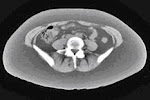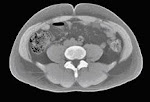Now that you know the different types of fat in your body (My earlier post - Know your body fat: The different types), let us look at the different types of fat in your food – where the saga of fat begins.
The three main types of fats commonly found in our food are Essential Fatty Acids (EFA), Cholesterol and saturated fat, polyunsaturated fat (PUFA) and mono-unsaturated fat (MUFA).
Let us take up saturated fat, polyunsaturated fat (PUFA) and mono-unsaturated fat (MUFA) first.
The classic examples of each would be butter, Sunflower oil and olive oil.
Saturated fats increase the LDL (the bad guy) and decrease the HDL (the good guy). To know more about LDL and HDL, see my earlier post - Know your body fat: The different types.
These go into the fat cell first but get removed from the fat cell last. Coconut oil, Palm Oil, regular Cheese and full-cream milk are a few representative examples of saturated fat.
Polyunsaturated fats are ‘good fats’ in small amounts since they can lower LDL levels. Sunflower oil and Soybean oil are examples of polyunsaturated fat. Apart from containing PUFA, green leafy vegetables also contain Essential Fatty Acids
Essential Fatty Acids
EFAs are not stored as fats but are used to provide energy for the body metabolism and hence the ‘essential’ tag. A deficiency of EFA can lead to rupturing of cells, and allowing of small molecules and water into the cell. This loss of cell function compromises the ability of the cell to produce and function optimally.
EFAs are also involved in muscle contraction, blood clotting, blood pressure control, hormone production and nervous tissue functions of the eye and brain. Do not, therefore, cut out the Essential Fatty Acids from your diet.
Cholesterol
Cholesterol is perhaps the most misunderstood and feared member of the fat family. It is essential for good health and is internally produced in the body, in the liver and most cells. Cholesterol is involved in the production of sex hormones and bile. Bile helps dissolve fats much in the same way as a detergent helps dissolve oil in a greasy plate.
Humans internally produce approximately 1 gm of Cholesterol daily and that is all the body needs. Thus specific Cholesterol particles called Lipoproteins (LDL & HDL) are found in human blood. Any extra Cholesterol in the diet can become harmful.
The levels of LDL (bad) and HDL (good) can increase or decrease according to the food you consume. Plant foods such as vegetables and fruits contain no Cholesterol. Regular exercise can increase the HDL levels.
In the end, remember that all oils, good or bad, when eaten in excess can be fattening.
Subscribe to:
Post Comments (Atom)


No comments:
Post a Comment